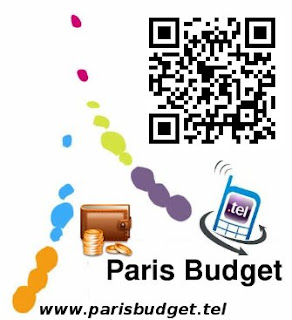During our January school holidays, I enjoyed reading Jarrod Robinson’s post about QR Codes and their possible uses in education. Prior to reading his post, I had seen QR Codes but had no idea of their purpose or possible uses.
Since returning to school, I have continued to follow Jarrod’s journey via his tweets on Twitter and have had very worthwhile (and fun!) discussions with my colleagues, Nathan and Stephen.If you are not familiar with the concept of QR Codes, these sites are all an excellent introduction. A comprehensive site for information and news about QR Codes is the 2D Code site. Links to the Code Readers and Code Generators are particularly helpful.
For me, the first step was being about to use my mobile phone to read QR Codes. I tested a number of QR Code Readers for the iPhone:
- 2D Sense (free, includes move and scale feature)
- Barcodes (free, includes move and scale feature)
- iDecode (free)
- NeoReader (free)
- QR Reader ($2.49)
- UpCode (Free)
- Snappr (Free, includes move and scale feature)
Overall, my favourite iPhone QR Code Readers were:
- Barcodes – free, has move and scale feature, decodes quickly, like the way it displays results in a simple format
- Snappr – free, has move and scale feature, takes a little longer to decode but is able to read a variety of codes that other readers had trouble with
- QR Reader – if the image is correct, does read the code very quickly
So now the big question is, “How can QR Codes be used in education?” Again, Jarrod has some exciting ideas in his QR Codes in Education post. We are particularly interested in looking into the following uses:
- “The Amazing Race” using QR Codes: Codes could either be printed on a sheet and given to students or displayed in different locations. Students could then access clues that are not just text-based, but include images, web sites, etc… This adds a whole new dimension to this type of activity.
- Sharing resouces with students: Because you can create QR Codes that link to content such as images and audio files, students can easily access these items via their mobile phones. This could have exciting possibilities for student access to content such as podcasts.
- QR Codes on library books: During a Twitter discussion, Jarrod suggested QR Codes on library books with a link to a web site, audio file, etc… with additional information about the book.
- Add QR Codes to printed materials: If you need to give a printed copy of information to students, you can add QR Codes with links to online resources. Students are then able to easily access this extra content without the need for a computer.
- Voting via QR Codes: Snappr allows you to create codes that link to an online voting system. This is a great way to quiz your students or gauge their opinions.
- Create a Snappr Micropage: Snappr also allows you to create a Micropage. This is a basic web page with a title, images, text and URLs. The page is optimized for viewing on a mobile phone.
You can also view some screenshots about this post on my Flickr set, QR Codes in Education.
This entry was posted on
Create a free edublog to get your own comment avatar (and more!)
3 Responses to “Loving the Possibilities with QR Codes!”
Source:
http://lucybarrow.edublogs.org/2009/02/17/qr-codes/
.



































































February 17th, 2009 at 9:26 am
You can read more QR codes at
http://www.qrme.co.uk/qr-codes-explained.html
February 17th, 2009 at 3:04 pm
Thanks so much Ian – that is an excellent site that explains everything beginners like me need to know about QR Codes and other types of codes. Since publishing this post, I have been sent other great sites via Twitter. These delicious links have all of the sites listed http://delicious.com/lucybarrow/qrcodes
February 17th, 2009 at 5:00 pm
Keep up with NeoMedia Technologies via my blog
http://streetstylz.blogspot.com/